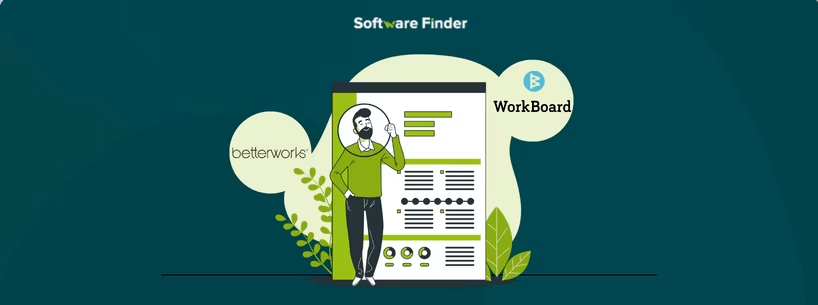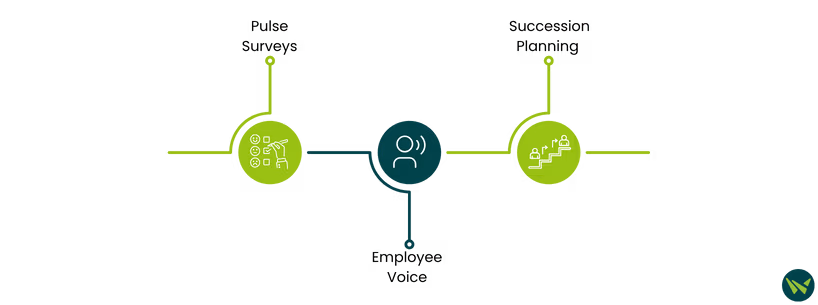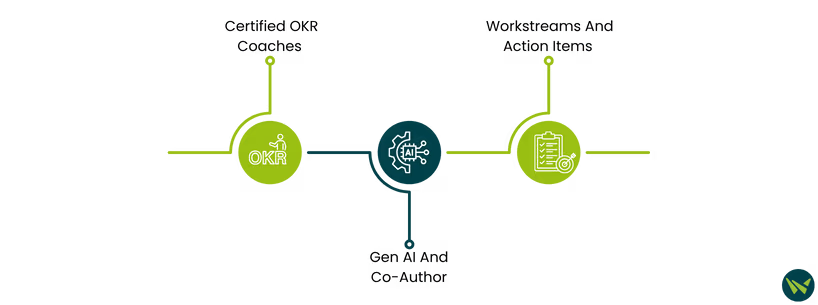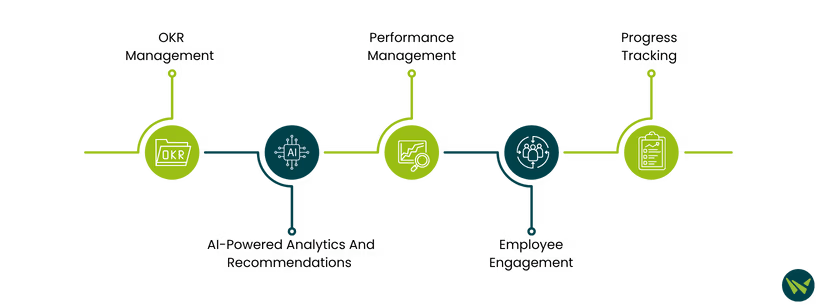
When it comes to team alignment, objective tracking, and driving performance, the right performance management and OKR software can have a significant impact. Betterworks and WorkBoard are two leading platforms that help businesses align strategy and execution.
Both solutions provide unique capabilities in goal tracking, employee engagement, analytics, and performance insights. This comparison evaluates the advantages, disadvantages, and prices of each platform to help you make an informed decision.
Features | Betterworks | WorkBoard |
OKR Management | Flexible OKRs, confidence tracking, nudges, Slack software/Jira integrations for engagement and accountability | Outcome-focused OKRs with cross-functional visibility, workflow integrations, and best-practice templates |
AI-Powered Analytics And Recommendation | Goal Assist, Feedback Assist, Conversation Assist, private LLM for security | AI Agents, Co-Author, smart scorecards, heatmaps, and coaching prompts for strategic execution |
Performance Management | Continuous check-ins, calibration, AI evaluations, real-time insights, and templates | Real-time 1:1s, EPA sliders, AI impact summaries, and coaching suggestions |
Employee Engagement | Anonymous eNPS, D&I, pulse/event surveys, multilingual support, and heatmaps | Embedded EPA sliders in 1:1s, live recognition, and weekly emotional status updates |
Progress Tracking | Manual/automated updates, milestone tracking, progress locks, status colors, nudges | Real-time updates, Heatmap View, cross-platform sync, smart scorecards, and task alignment |
Pricing | Starts from $7/user/month *Pricing is subject to change | Starts from $20/month *The pricing has been sourced from third-party websites and is subject to change |
Betterworks is a comprehensive performance management and objectives and key results (OKR) platform. It aligns employee goals with organizational strategy, promotes engagement, and drives accountability across the workforce.
The platform ensures transparency and cross-functional alignment, enabling teams to overcome challenges and stay focused on measurable business outcomes.
Unique Features Of Betterworks

- Pulse Surveys: Enable real-time employee engagement tracking, including customizable pulse, eNPS, D&I surveys, anonymous feedback, AI-driven analytics, visual dashboards, benchmarking, and action-planning features
- Employee Voice: Allows for open, two-way communication, sentiment analysis, subject recognition, anonymous feedback, and real-time crowd-sourced insights to guide management decisions
- Succession Planning: Provides real-time views of bench strength, readiness levels, and development plans. It also allows for continuous collaboration, internal mobility, and proactive talent growth rather than annual evaluations
Pros And Cons
WorkBoard is an OKR (Objectives and Key Results) and strategy execution software platform. It enables companies to align teams, track progress, and achieve measurable goals.
Founded in 2013, WorkBoard has established itself as a leading solution for large enterprises seeking to help bridge the gap between strategy and execution.
Unique Features Of WorkBoard

- Certified OKR Coaches: Are trained to set high-integrity OKRs, support cross-functional alignment, facilitate outcomes-focused sessions, and improve team performance from the first quarter
- Gen AI And Co-Author: Help teams create better OKRs, simplify collaboration, identify dependencies, generate automated progress reports, and streamline retros with theme clustering and action suggestions
- Workstreams And Action Items: Allow teams to organize tasks on customizable boards, assign ownership and status, integrate actions within meetings, and link them directly to OKRs, boosting transparency, accountability, and collaboration
Pros And Cons


Betterworks provides tailored pricing tiers, Mid-Market and Enterprise, with pricing starting at approximately $7/user/month. These plans support a wide range of organizations, from growing mid-sized teams to large global enterprises. Each plan includes access to its core performance management tools, including OKRs, feedback, 1:1 conversations, recognition, engagement surveys, and AI-powered analytics, with pricing determined based on company size and feature needs.
Disclaimer: The pricing is subject to change.
On the other hand, WorkBoard's custom pricing model is tailored to an organization's complexity and usage. While exact pricing depends on deployment and feature selection, the entry-level tier is estimated to start at approximately $20/user/month.
Disclaimer: The pricing has been sourced from third-party websites and is subject to change.
Betterworks and WorkBoard are robust platforms for aligning goals, improving performance, and driving company outcomes; however, they serve distinct purposes.
Betterworks excels in continuous performance management, structured OKRs, and comprehensive employee engagement tools, making it an excellent choice for companies that prioritize employee development, transparency, and accountability. On the other hand, WorkBoard is designed for fast-paced strategy execution, with powerful AI capabilities, real-time risk detection, and extensive workflow integrations.
If you want to foster team alignment and engagement, Betterworks is the better option. However, if your focus is on accelerated execution and acquiring real-time visibility into outcomes, WorkBoard can be the perfect choice.
